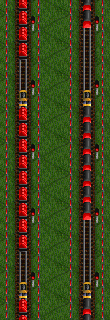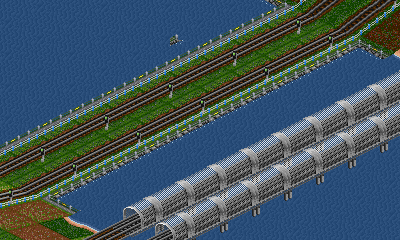Fail-Safe Joiners, Priorities and the Cyclotron example
Some days ago I stumbled upon openttd wikis page about Railyway Designs and I saw the Cyclotron created by Pitt2. Those high speed injectors are not too new and we experimented with them a lot. Though we don’t use them in most cases, because they are difficult to build, depending on the properties of trains and such. Its just too much work for too less effect and pre-accelerated joiners are the better choice. Though I had a look at the construction and checked how it worked. A little footnote about a fixed bug made me curious, but then I understood that it fixes the issue which occurs if a train wants to join another track but in the same moment the signal turns red and the train stops blocking a complete line. Therefor we have the overtaking lanes in most SML constructions. We all like cool words for cool constructions, here they are. Fail-safe Joiners:

 Whenever starting a new game, be it local or on #openttdcoop, one important question to be cleared before starting to build the network always is: “What tilelength (TL) are we going to use for our trains?”.
Whenever starting a new game, be it local or on #openttdcoop, one important question to be cleared before starting to build the network always is: “What tilelength (TL) are we going to use for our trains?”.